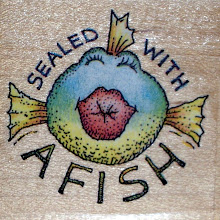
I had never heard of a frost flower before yesterday. I am enthralled!

So delicate. Takes me to a place of wonderment again.

Frost flowers is the name commonly given to a condition in which thin layers of ice are extruded from long-stemmed plants in autumn or early winter. The thin layers of ice are often formed into exquisite patterns that curl into "petals" that resemble flowers.
The formation of frost flowers, also known as "ice flowers," is apparently dependent on a freezing weather condition occurring when the ground is not already frozen. The sap in the stem of the plants will expand (water expands when frozen), causing long, thin cracks to form along the length of the stem. Water is then drawn through these cracks via capillary action and freezes upon contact with the air. As more water is drawn through the cracks it pushes the thin ice layers further from the stem, causing a thin "petal" to form. In the case of woody plants and tree branches the freezing water is squeezed through the pores of the plant forming long thin strings of ice that look uncannily like hair ie: "frost beard".
The petals of frost flowers are very delicate and will break when touched. They usually melt or sublimate when exposed to sunlight and are usually visible in the early morning or in shaded areas.
Examples of plants that form frost flowers are white crownbeard (Verbesina virginica), commonly called frostweed, yellow ironweed (Verbesina alternifolia), and Helianthemum canadense. The have also have been observed growing from fallen branches of conifers and contain enough hydraulic power to strip the bark off.
These formations are also referred to as "ice flowers", "frost castles", "frost beard", "ice castles", "ice ribbons", or "ice blossoms".
The name "frost flowers" is also a name given to formations on newly formed ice in the arctic.
The formation of frost flowers, also known as "ice flowers," is apparently dependent on a freezing weather condition occurring when the ground is not already frozen. The sap in the stem of the plants will expand (water expands when frozen), causing long, thin cracks to form along the length of the stem. Water is then drawn through these cracks via capillary action and freezes upon contact with the air. As more water is drawn through the cracks it pushes the thin ice layers further from the stem, causing a thin "petal" to form. In the case of woody plants and tree branches the freezing water is squeezed through the pores of the plant forming long thin strings of ice that look uncannily like hair ie: "frost beard".
The petals of frost flowers are very delicate and will break when touched. They usually melt or sublimate when exposed to sunlight and are usually visible in the early morning or in shaded areas.
Examples of plants that form frost flowers are white crownbeard (Verbesina virginica), commonly called frostweed, yellow ironweed (Verbesina alternifolia), and Helianthemum canadense. The have also have been observed growing from fallen branches of conifers and contain enough hydraulic power to strip the bark off.
These formations are also referred to as "ice flowers", "frost castles", "frost beard", "ice castles", "ice ribbons", or "ice blossoms".
The name "frost flowers" is also a name given to formations on newly formed ice in the arctic.

Aren't they incredible?

We have added frost flower hunting to our list of things we want to do before we leave this earth.
















2 comments:
Wow -- I am amazed. Never heard of frost flowers and I am totally enthralled. Keep us posted if you ever see some for real.
I've never heard of them! I'm also adding them to my list of things to look for!
Post a Comment